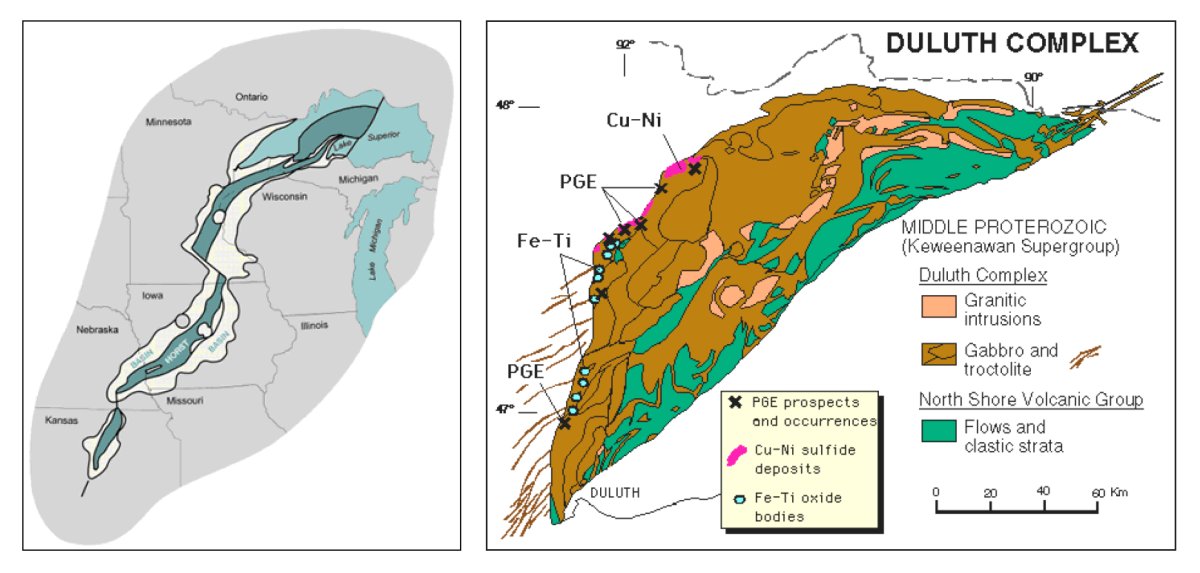Potential for Geologic Carbon Sequestration in Minnesota
The Minnesota Legislature and the U.S. Geological Survey have supported evaluation of the potential for geologic carbon capture and storage (CCS), also known as carbon sequestration, in Minnesota.

This involves capture of CO2 from sources such as coal-fired electrical generating stations or ethanol plants, transportation of the CO2, and storage in a geologic medium to provide long-term isolation from the atmosphere. The method could involve injection into deep saline underground formations, or mineral carbonation, a reaction of CO2 with minerals such as olivine to produce a stable solid product.
The only reservoirs in Minnesota with depth and storage properties that might possibly be adequate for deep injection are sedimentary rocks associated with the Midcontinent Rift, which extends from the Lake Superior basin to Kansas. A 2008 report by the Minnesota Geological Survey concluded, however, that these rocks, which occupy two north-south belts averaging about 40 km wide on either side of the Twin Cities between Pine County and Iowa, have attributes that make them far less suitable for sequestration than sites being considered elsewhere. The report therefore concluded that there is a very low probability of success in confirming suitable geologic conditions for this option.
A second report produced in 2011 by the Minnesota Geological Survey evaluated the potential to use mineral carbonation as a means of carbon sequestration in Minnesota. It notes that although the method has not been tested at field scale, experiments indicate that large tonnages of mafic rock near Duluth could be appropriate source material. These rocks are also potential sources of copper, nickel, and platinum group elements that might be mined in proximity to existing infrastructure. Depending on the degree of serpentinization, one mine at currently anticipated production rates could provide enough waste rock to sequester ~1% of Minnesota's CO2 emissions, at a cost of ~100 million dollars per year, or over $50US/t CO2. Costs could potentially be reduced if future research increases the efficiency of the method, or if it turns out that metals could be produced from the mineral carbonation circuit. Implementation would only happen if incentives relative to cost were favorable. Sequestration of additional CO2 by this method would require some combination of higher mine production rates, more than one mine, or preferential mining of olivine. The report thus concludes that, as recognized in previous evaluations of the process, the principal drawback of mineral carbonation is its high cost compared to other methods of sequestration.